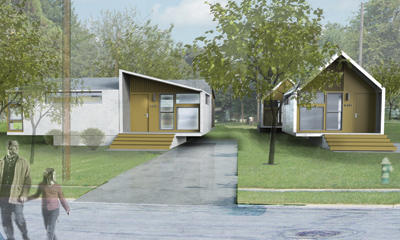
Note: Story updated below.
Over at Wilshire Village, all appears on track for one of those classic salvage-free start-over-the-weekend demos — the kind this town is famous for! A pre-demo sewer-disconnect permit for the apartments was pulled yesterday. And a Swamplot reader has sent in a photo report:
I saw that one of your commenters had noticed the Komatsu in the parking lot of Wilshire Village. It’s from Ambush Demolition, so that’s not a particularly good sign. There are numbers spray-painted on the sides of at least some of the buildings there and orange cable (and gas line?) markings on the sidewalks . . .
Will Wilshire Village’s actual demo permit be purchased sometime today? You’ll get a definitive answer . . . in next Monday’s Daily Demolition Report, right here on Swamplot!
Now, about that closeup:














